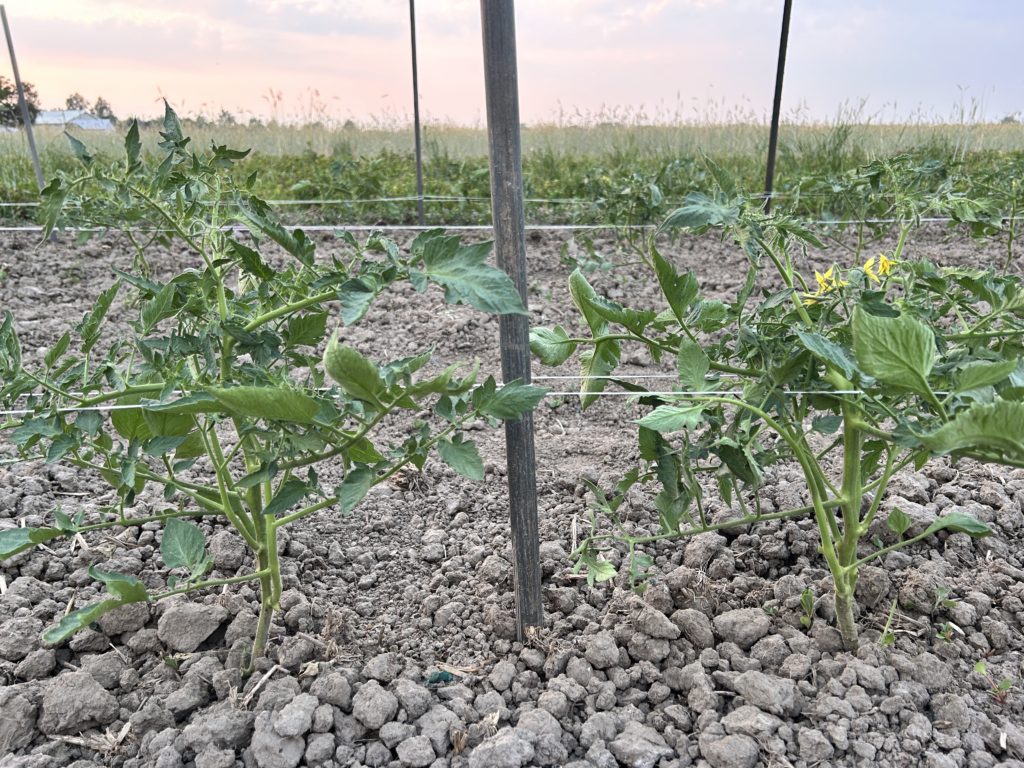The Great Tomato Staking – How to Keep Your Tomatoes Healthy and Strong
This week, our crew focused on staking and twining the tomatoes. But what exactly does that mean?
Why Staking is Important
As tomato plants grow taller, their weight can cause them to fall over. If the tomatoes touch the ground, they become much more susceptible to diseases. To prevent this, we provide the plants with a trellis to climb. We build this trellis in the field using stakes and tomato twine stretched between them. The tomato plants are then woven between the twine, which helps keep them strong and healthy.

The tomatoes are woven between the twine, and the twine is wrapped around the tomato stakes.
How the Process Works
Usually, around the end of July, we notice the plants starting to lean. That’s when we bring out our bin of fiberglass stakes and head to the tomato fields. Each stake is about 4 feet high. The crew lays out the stakes on the ground every 4-5 plants. They then take turns pounding the stakes into the ground by hand using a metal stake pounder. This task provides a very physical upper body workout, with each stake requiring about 4-5 hits from the pounder. We place close to 2000 stakes each year, and because it’s so exhausting, we break the work up into two days. We also start early in the morning when the temperatures are cooler, taking plenty of popsicle and water breaks in the shade.
Watch Our Video
Check out our video to see how it’s done.
Staking is easily the hardest physical labor on the farm all season long. It doesn’t help that it occurs during the hottest week of the year. Larger farms use machines for this work, but for a small farm like ours, manual labor is still the way to go.
The Florida Weave Technique
After placing the stakes, our crew ties the tomato twine between them using a technique called the Florida Weave. This method involves weaving the plant’s stem between the twine, in a basket-like structure, providing support as it grows taller. It’s hard on your back the first time you do it! Watch Farmer Kurt demonstrate the Florida Weave technique in this video:
We repeat this process three times over the course of the early summer as the plants continue to grow. Each time, we carefully weave the plant’s stem between the twine to ensure it stays upright and healthy.
